
With the support of our company, my family (my husband and my son) and I took a fam trip to Chongqing and Yibin of Sichuan Province this summer. This trip is part of one of our current product routes, from which I gained valuable experience. Below are the summaries of the trip.
Day1 / 26 July High speed trainZhengzhou Dong - Chongqing Bei G3477 (1013-1531)
We took the highspeed train from Zhengzhou, where we live, to Chongqing, a journey of just 5 hours. After arriving and settling into our hotel room, we eagerly headed outto find a local hotpot restaurant. We couldn’t wait to try Chongqing Hotpot,especially the famous “Nine-Square” Hotpot. The “Nine-Square” Hotpot cleverly divides the traditional hotpot base into three layers: the central grid, the cross-shaped grids, and the corner grids. Each section has different temperatures and varying levels of beef fat concentration, making it suitable for cooking a variety of ingredients. Despite the intense spiciness, we savored every bit, sweating with delight. This is an experience you can't miss when traveling to Chongqing.
Hotpot 【九宫格火锅】

Day2 / 27 July Chongqing
Traveling by subwayin Chongqing City is very convenient, making it easy to explore the city's key attractions. Today we visited several notable spots such as Liberation Monument, Baixiangju residential community, Hongyadong and Qiansimen Bridge.
Liberation Monument 解放碑

We found Baixiangju quite interesting. Built in 1993, Baixiangju is a 24-story building without elevators. Its design cleverly utilizes the city's hilly terrain, with aerial walkways connecting different apartment blocks, creating a distinctive multi-level layout. In an era before elevators were common, this design greatly facilitated residents' daily lives. Today, the Baixiangju community has become a popular tourist attraction, celebrated for its unique architectural design and prime location. From this vantage point, we enjoyed breathtaking views of the Yangtze River.
Baixiangju【白象居】

Chongqing Hongyadong is a famous riverside complex known for its distinctive traditional stilt-style architecture that seemingly hangs over the Yangtze River. This vibrant area is a popular tourist destination featuring a mix of shops, restaurants, and cultural attractions. The complex is renowned for its picturesque views, lively atmosphere, and unique design. The best time to visit Hongyadong is in the evening when the colorful lights illuminate the area. The stunning display of lights creates a magical ambiance, highlighting the intricate architecture and enhancing the overall beauty of the riverside complex. During summer vacation, Hongyadong was so crowded that we couldn't get inside. Instead, we made our way to Qiansimen Bridge to capture a photo from a distance. It turned out to be a great decision, as the view from thebridge was truly spectacular.
Hongyadong & Qiansimen Bridge【洪崖洞 & 千厮门大桥】

I have to admit that we are truly hotpot enthusiasts. This evening, we went for hotpot again. Given that the previous hotpot was too spicy for my son, we opted for a split pot with both mild and spicy options. Again it was another exquisite hot pot experience; we all ate until we could barely move, haha...
A Split Pot【鸳鸯火锅】
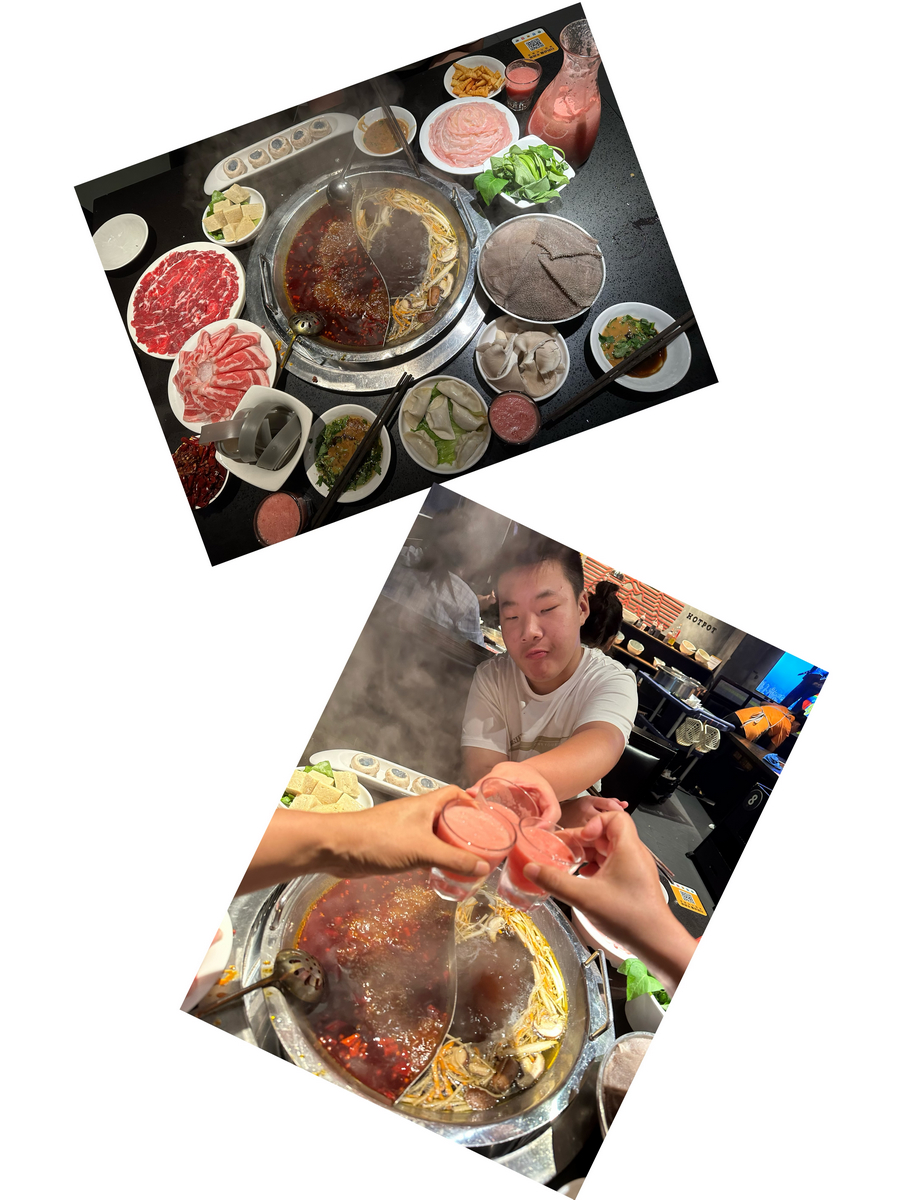
Day3 / 28 July Chongqing
Chongqing is known as a mountain city, and the Mountain City Trail refers to pedestrian-only pathways within the city. Unlike many urban alleys, the Mountain City Trail features numerous steps and slopes, which locals refer to as "梯坎"(step-like steps). A prime example is the Third Mountain City Trail. Located on the southern slope of the Yuzhong Peninsula, it runs from north to south, passing landmarks such as the Central Hospital (formerly the Legislative and Judicial Yuan of the Nationalist Government), the Anti-Japanese Memorial Hall,the Bodhi Vajra Pagoda, the site of the French Renai Church, and the Skywalk.The trail stretches 1,748 meters in total. A suspended skywalk has been built along the cliffside, offering views of the Yangtze River. Standing on the skywalk, we can enjoy a panoramic view of the southern bank of the Yangtze River.
Mountain City Trail
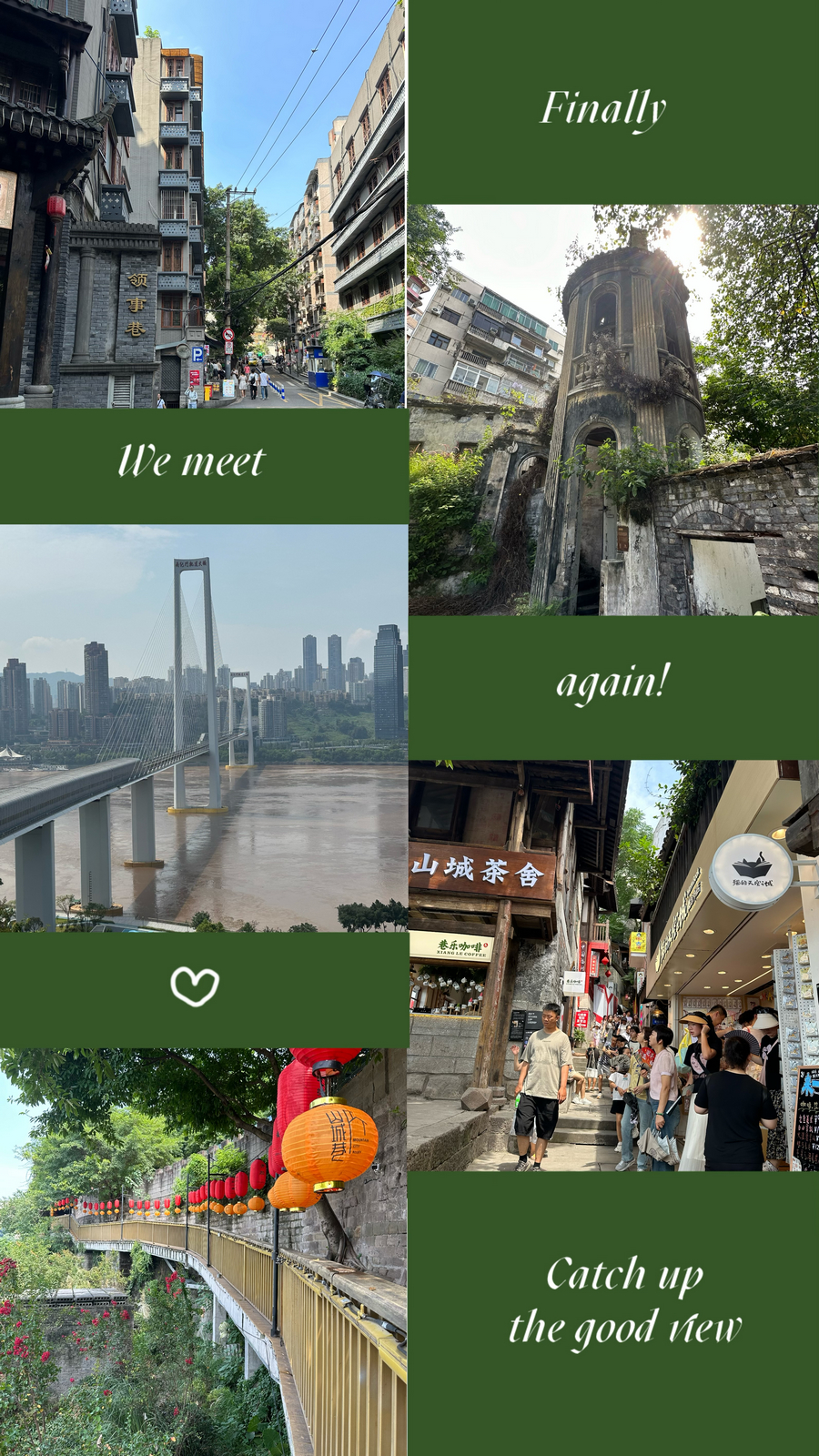
After a 2-hour hike along the trail, we headed to the Yangtze River cable station. The Yangtze River Cableway, which connects Yuzhong District and Nanan District in Chongqing, is a key feature of the citys unique three-dimensional transportation network. I had reserved our tickets earlier in the morning, anticipating the ride across the Yangtze would be a highlight. However, upon arrival, we were met with a long queue and learned that the wait time during peak season was around 2 hours. Despite the wait, once inside the cable car, we were rewarded with breathtaking views of the Yangtze River.
Yangtze River Cableway

From the cable station, we walked to Longmenhao Old Street, which is one of the most distinctive old streets in Chongqing, characterized by a nearly 50-meter elevation difference, embodying the city's signature "uphill and downhill" experience. Strolling through Longmenhao, we enjoyed grand views over the Yangtze River.
Longmenhao Old Street and River views
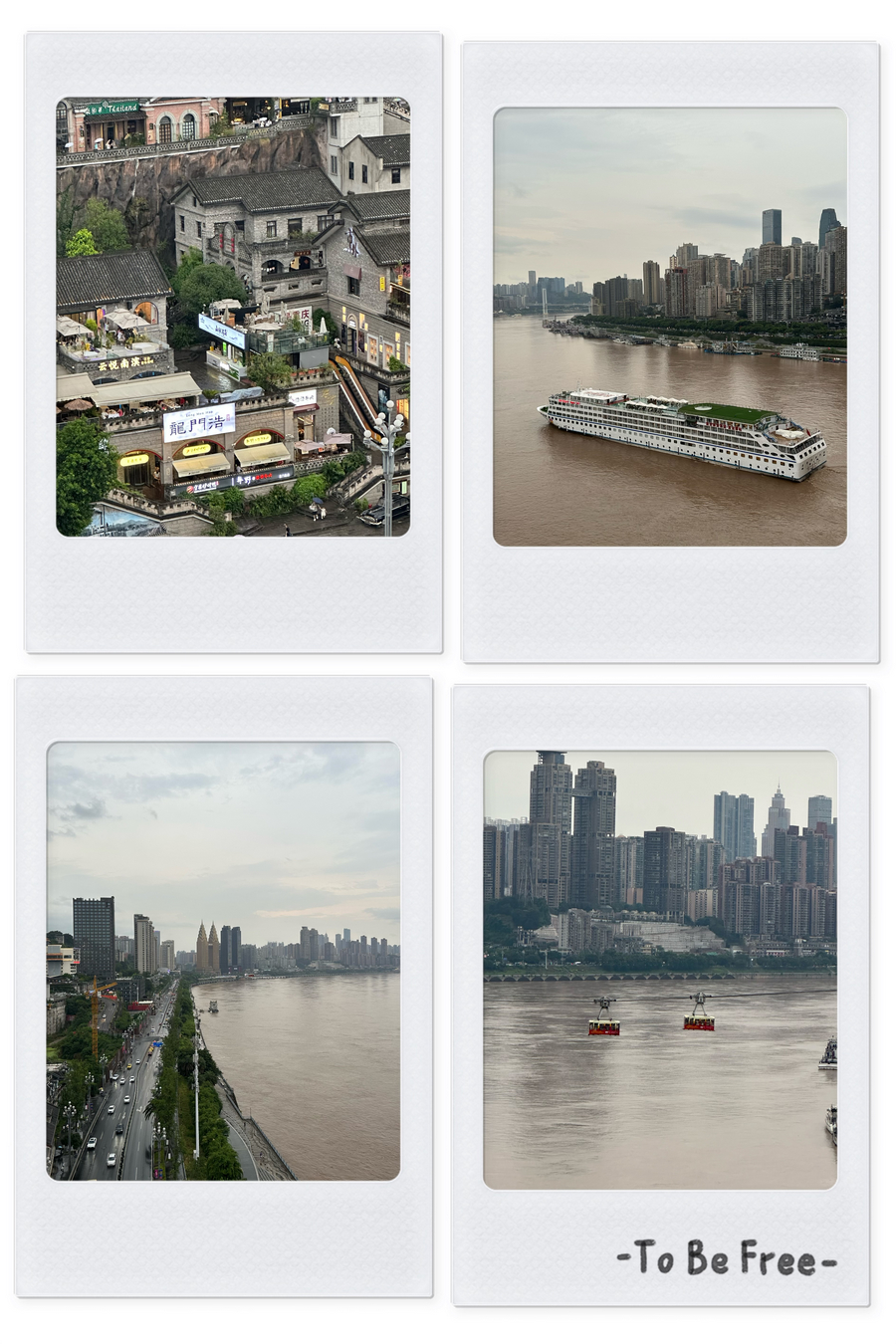
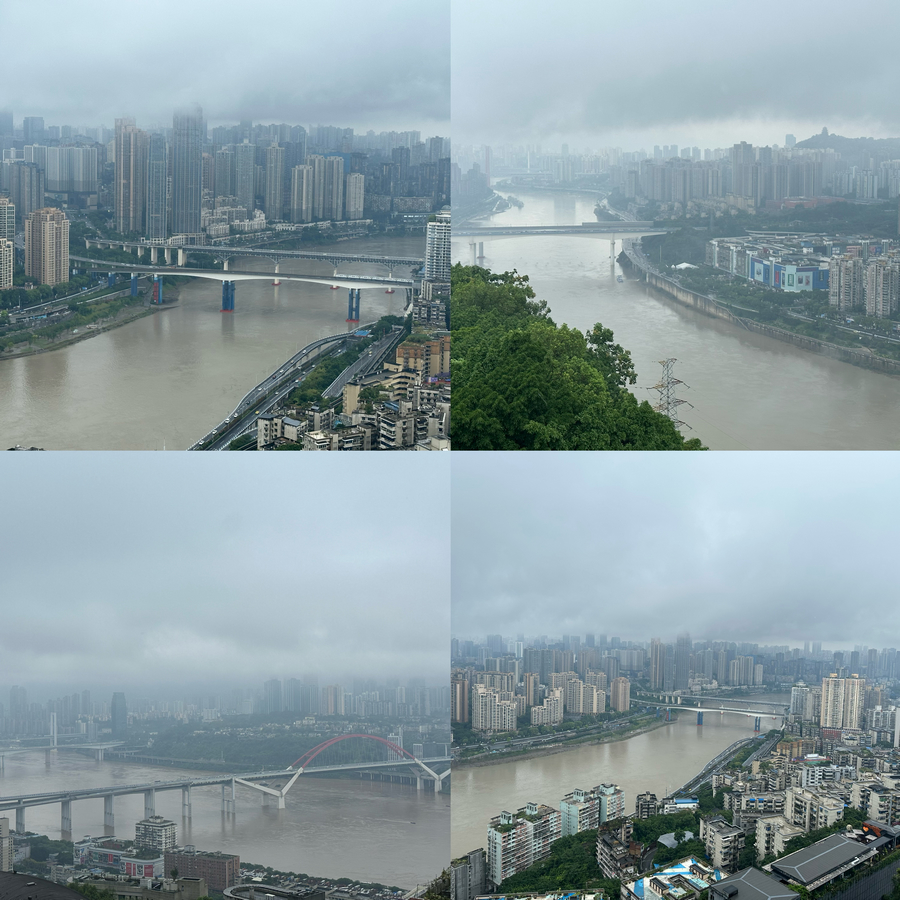
Day4 / 29 July Bus Chongqing - Yaoba Old Town
In the magical city of Chongqing, one spectacular sight that captivates visitors is the Liziba Light Rail Station—a remarkable place where trains pass through residential buildings. This unique feature is not only a marvel in China's and the world's rail transport history but also a new highlight for tourists in Chongqing. Located by the Jialing River and built into the hillside, the station's ingenious "track-through-building" design takes advantage of the city's three-dimensional terrain, showcasing Chongqing's distinctive charm. Standing on the platform, watching the light rail train slowly approach, it feels as though the train is not just passing through a building, but crossing the boundaries of time and space, leading us into an incredible world. After a photo stop at Liziba, we stepped on the light trail train and it was impressive to witness the train running just on a single trail.
Liziba Light Rail 【李子坝轻轨】
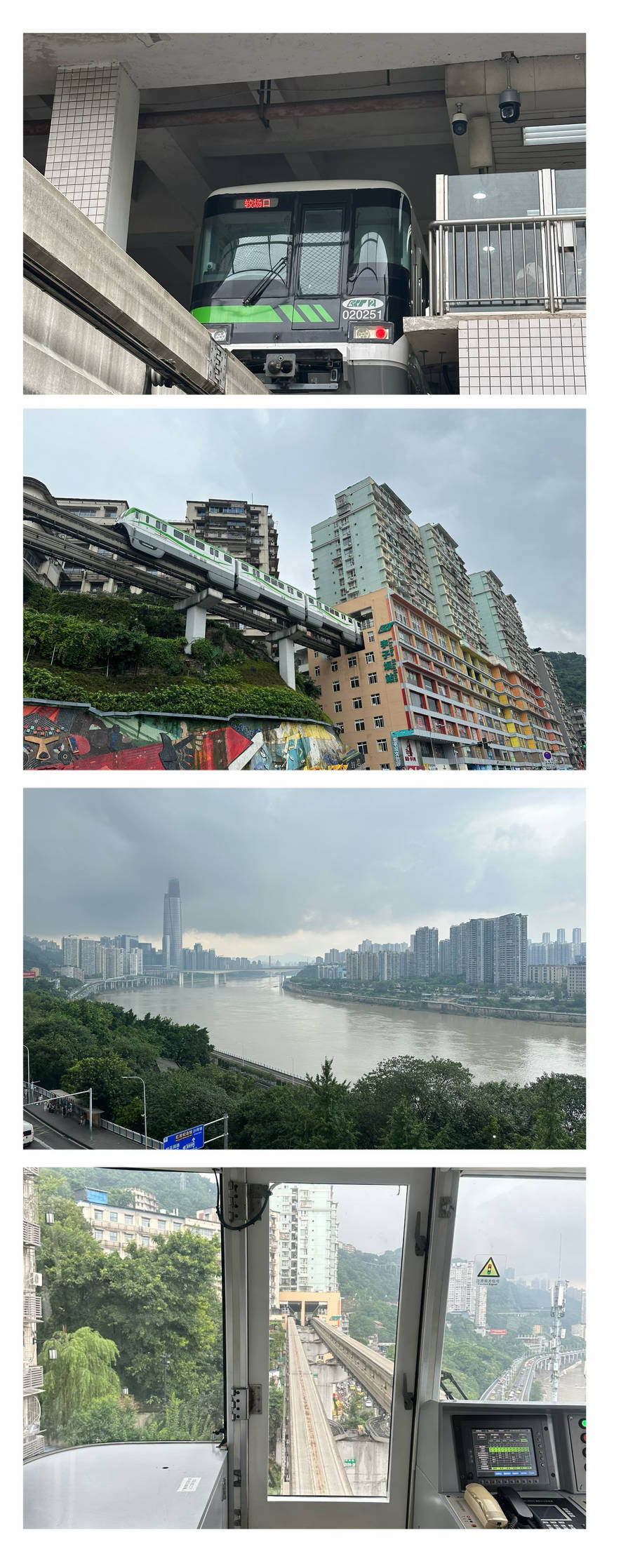
After lunch, we took public transport from Chongqing to Yaoba Old Town via Hejiang County. By the way, during this trip we took a lot of public transport, which is green and sustainable. It was a surprise to me that my son was happy with that. We arrived at Yaoba Old Town at about 4.30 pm. After checking into our rooms and dropping off our luggage, we headed straight to explore the old town. With its quiet streets and few tourists, Yaoba’s small size allowed us to stroll through it in just an hour. We had plenty of time to enjoy a delicious local lamb hotpot dinner.
Yaoba Old Town 尧坝古镇
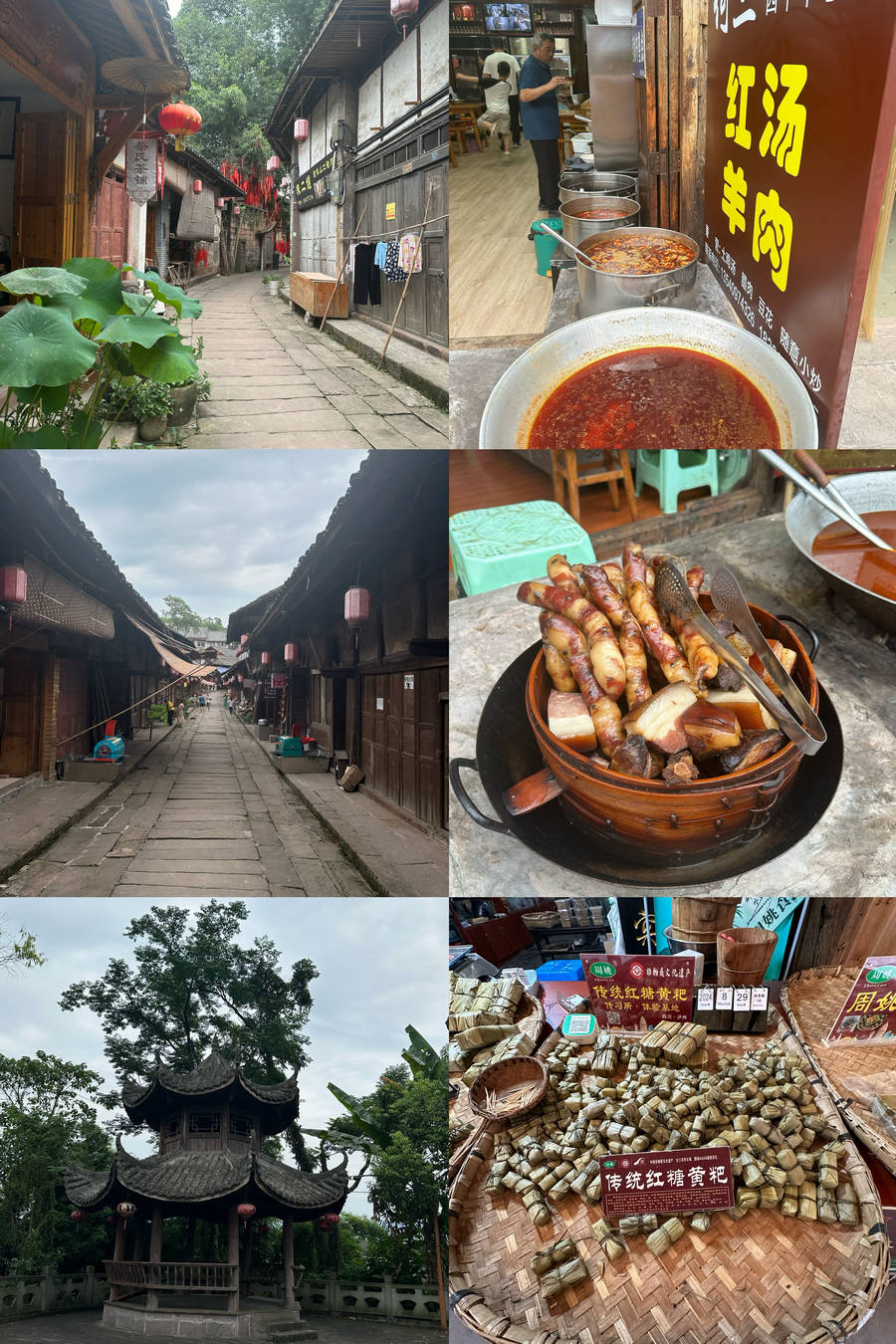
Day5 / 30 July Bus Yaoba - ShunanZhuhai
After breakfast, we took a series of local bus transfers from Yaoba to the Shunan Bamboo Sea Scenic Spot. By early afternoon, we had arrived at our hotel, a cozy home stay run by a warm and welcoming family spanning two generations. The hosts were exceptionally helpful and enthusiastic. In the late afternoon, the father graciously drove us to the Bamboo Museum for visit. There we learned some knowledge about bamboos.
That evening, we enjoyed a "Bamboo Feast" at the home stay. It was amazing to discover the variety of bamboo parts that can be eaten, including bamboo shoots, bamboo fungus, bamboo fungus eggs, bamboo mushrooms and bamboo flowers—all incredibly delicious. We joked that we felt like Giant Pandas enjoying their favorite treats!
Bamboo Feast
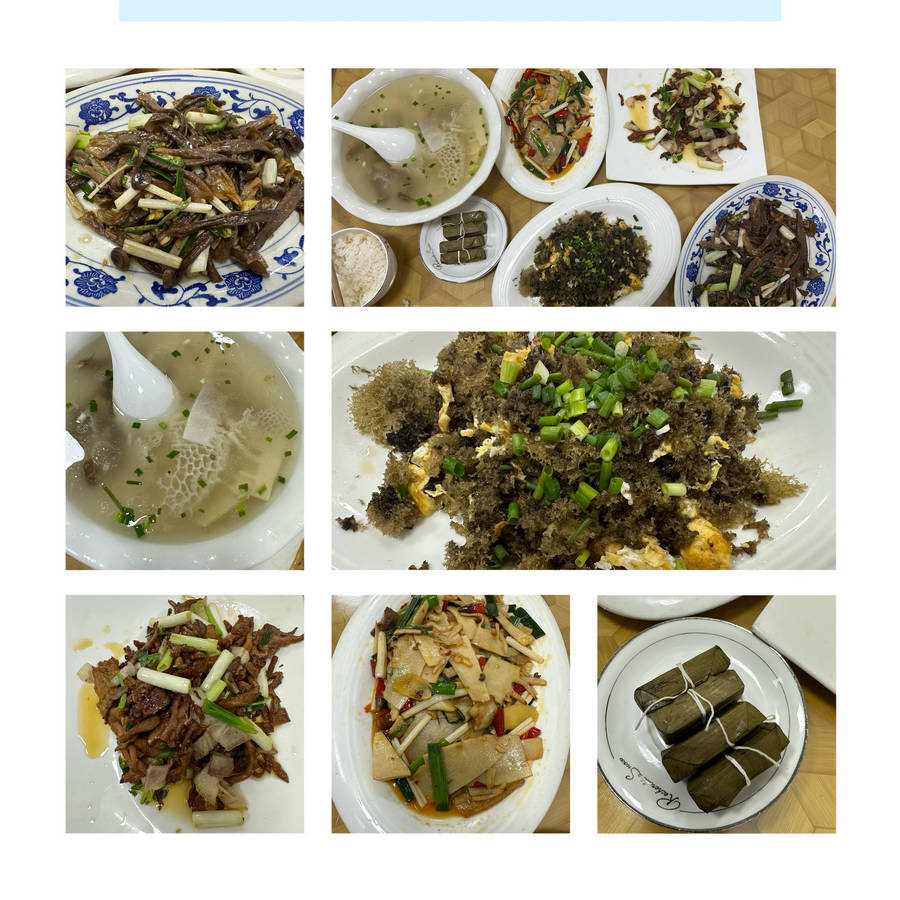
Day6 / 31 July Shunan Zhuhai
The Shunan Bamboo Sea Scenic Area is a bamboo-themed attraction that blends natural scenery with historical sites, serving as a summer retreat. The area features over 500 peakscovered in dense bamboo forests, with green waves stretching to the horizon. With a vegetation coverage rate of 93%, it serves as a natural green oasis with fresh air.
Today we went to explore the south part of the Bamboo Sea. We first took the cable car to the “Observation Tower” also named Guanhailou. From the tower, we could see an endless bamboo forest that resembled a sea.
Observation Tower
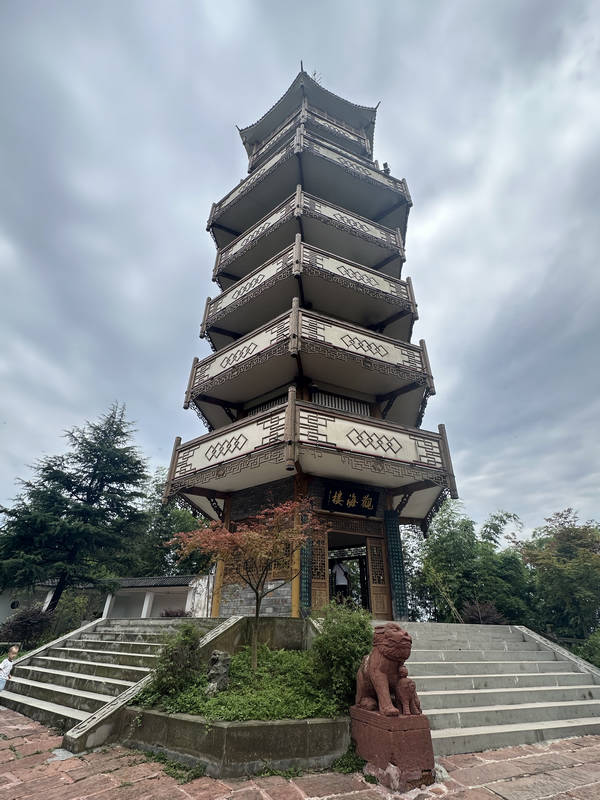
Xianyu Cave, renowned for its exceptional natural and cultural scenery, is hailed as the "Pearl of the Bamboo Sea." Located in the southern part of the Shunan Bamboo Sea, it is nestled among the steep cliffs, and is a must-visit site in the Shunan Bamboo Sea. Xianyu Cave is not actually a cave but rather a semi-cave extending about 500 meters, backed by a sheer cliff and overlooking a deep valley. Xianyu Cave served as a place of religious activity for both Buddhism and Taoism. It was once a vibrant place with flying eaves and flourishing incense, but now only a few Ming Dynasty rock carvings remain.
Xianyu Cave 仙堣洞
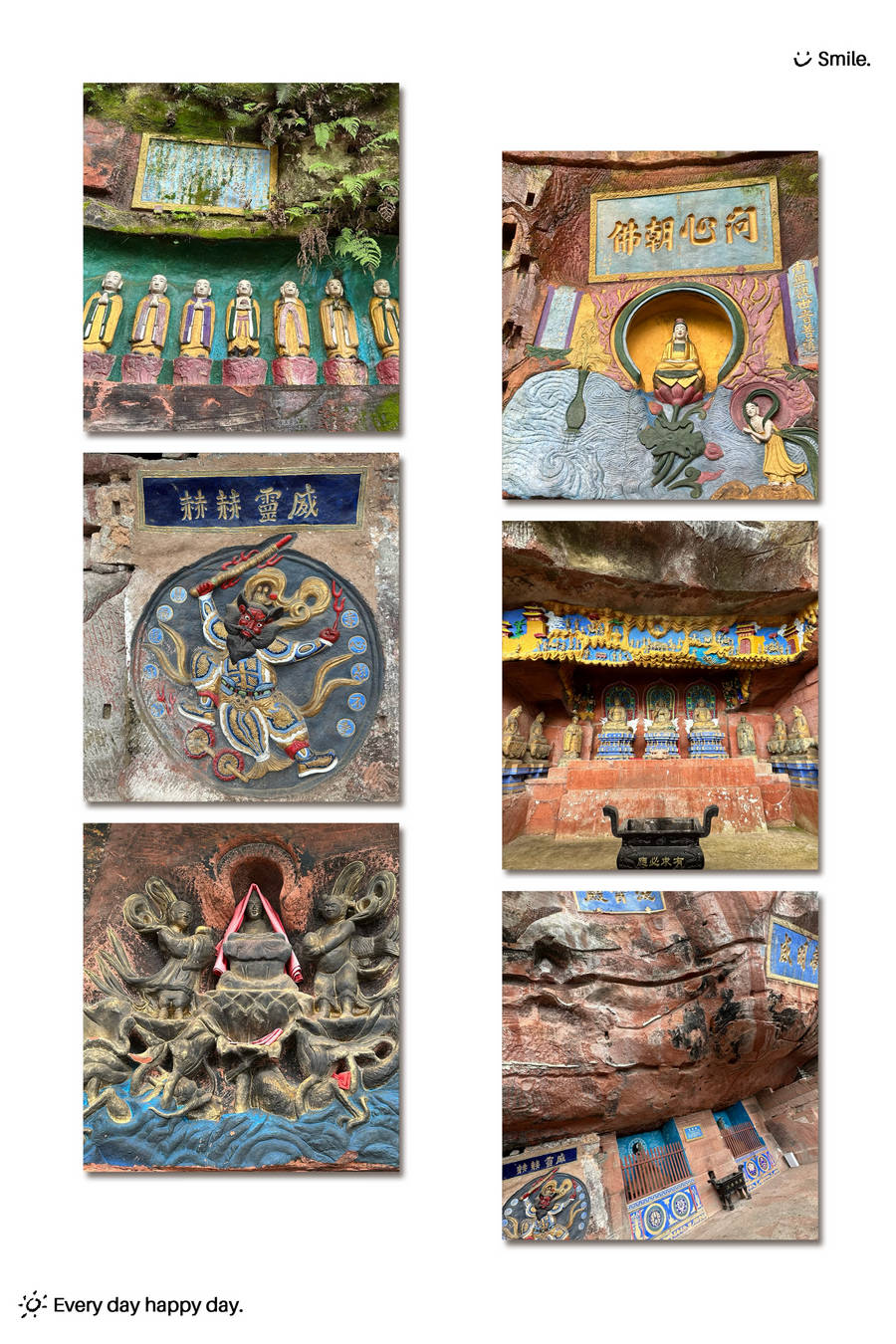
We continued our hiking. On the east of Xianyu Cave lies the Tianbao Fortress, also known as Tianbao Cave. The ancient fortress stretches 1500 meters in length, with a height of 20 meters and a width of about 10 meters. Its roof is made of rock, with most of the structure being a natural half-cave and some parts hewn by hand. Legend has it that this fortress was used by the ancient "barbarian army" as a military stronghold. It says it could house around 3000 people in the cave. After a half-day of exploration and hiking, we took cable car down the mountain and returned to our hotel.
Tianbao Fortress 天宝寨
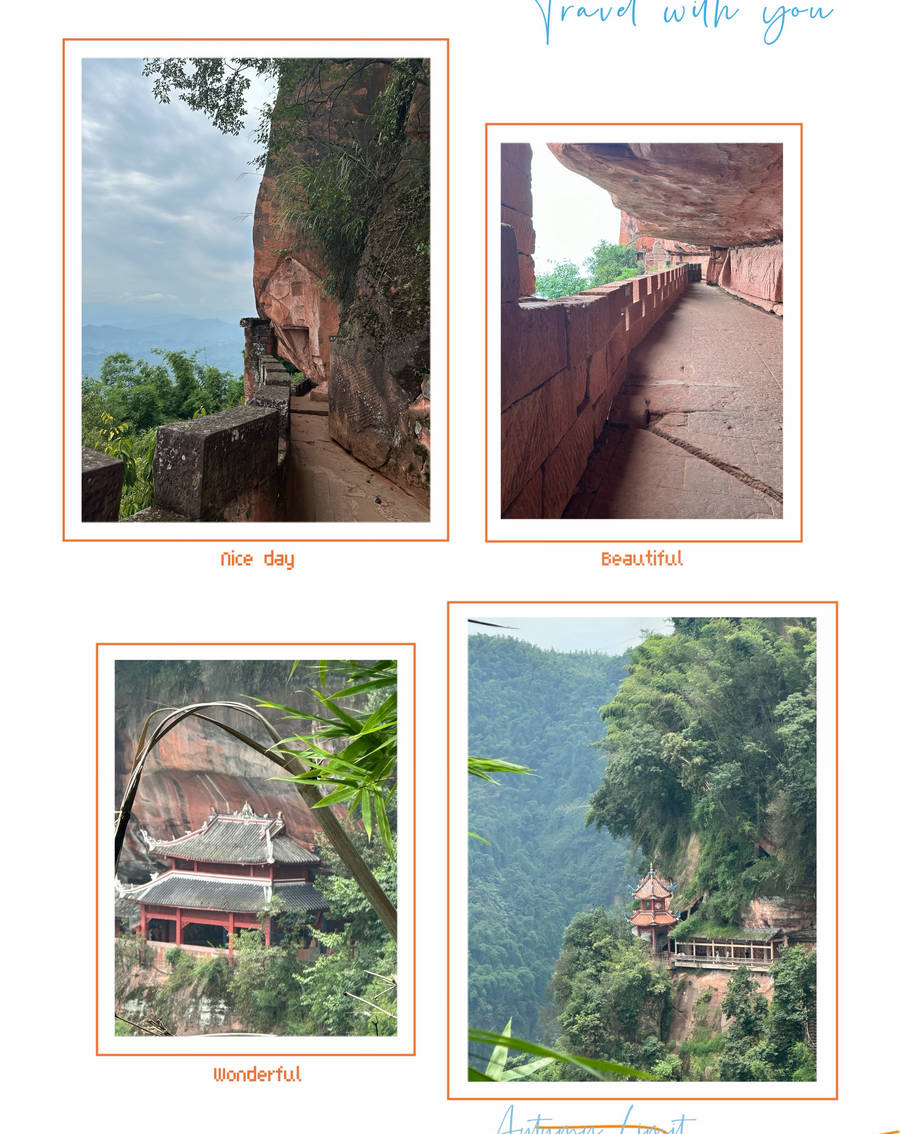
Day7 / 01 August Shunan Zhuhai
Today, we took shuttle buses to the northern part of the Bamboo Sea and visited two main sites: Longyin Temple and the Rainbow Waterfall (Qicai FeiPu). We found out it’sconvenient to take a shuttle bus within Bamboo Sea area with a fee of 5 yuan per person every time, and we did not wait long for the bus, just a few minutes.
shuttle bus【观光车】
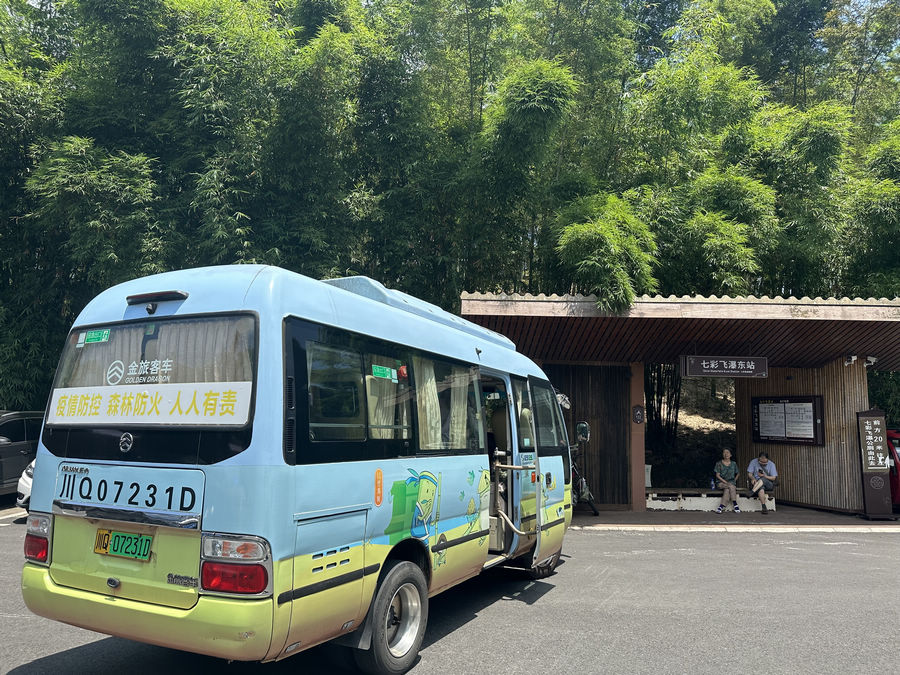
Longyin Temple【龙吟寺】
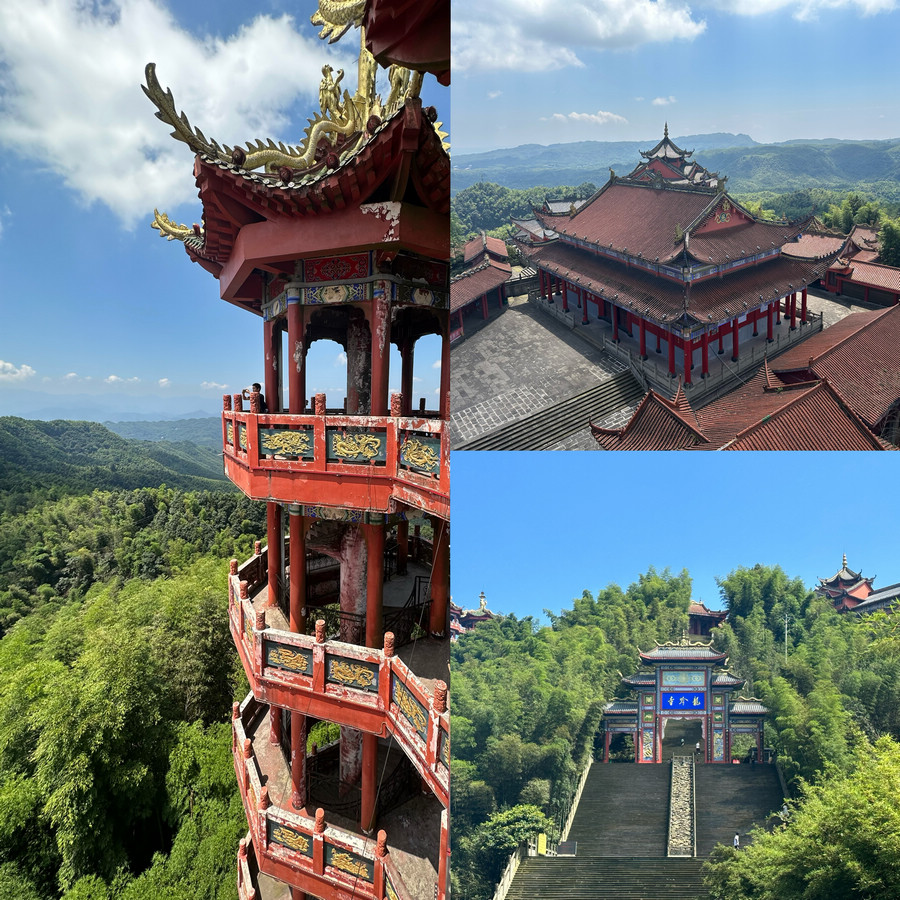
The Rainbow Waterfall is located in the Hulu Valley between Shigu Mountain and Shiluo Mountain. TheShui Liao River, flowing from the deep forest, cascades down in four tiers beneath the Huilong Bridge, creating a dramatic drop of nearly 200 meters. On a sunny day at noon, the sunlight often reveals a rainbow forming at the bottom of the pool.
Rainbow Waterfall【七彩飞瀑】
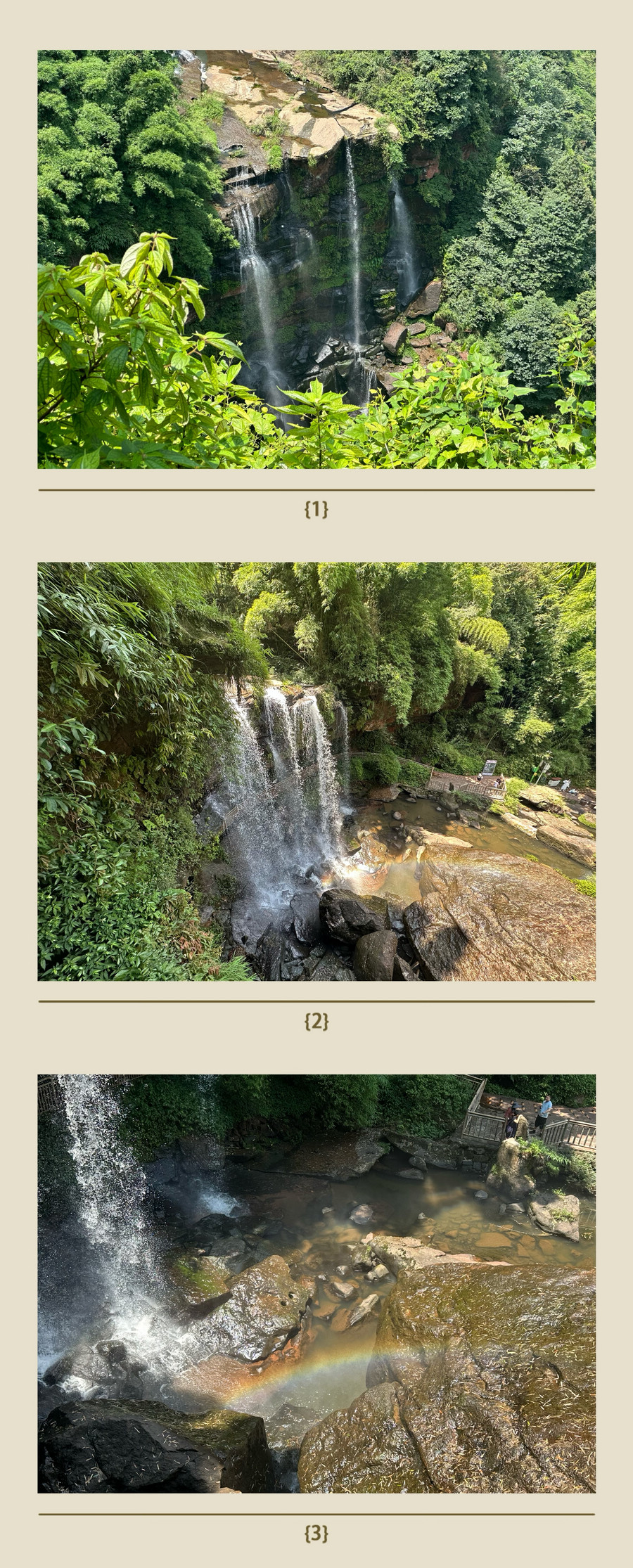
Day 8 / 02 August Bus Shunan Zhuhai - Lizhuang Old Town
After breakfast, we took local bus to Lizhuang old town via Yibin City. Li Zhuang Ancient Town is located in the Cuiping District of Yibin City. Named after a natural stone pillar, the town has a flat terrain and was originally a fishing village. It was established during the Liang Dynasty (circa 540-548 AD) and later became a trading hub during the Ming and Qing Dynasties. The town features a well-preserved layout and architecture from these periods, with stone streets and numerous Qing Dynasty buildings. The town is renowned as the "First Ancient Town of the Yangtze River" and is recognized as a historical and cultural town in Sichuan Province.
Lizhuang Old Town 李庄古镇
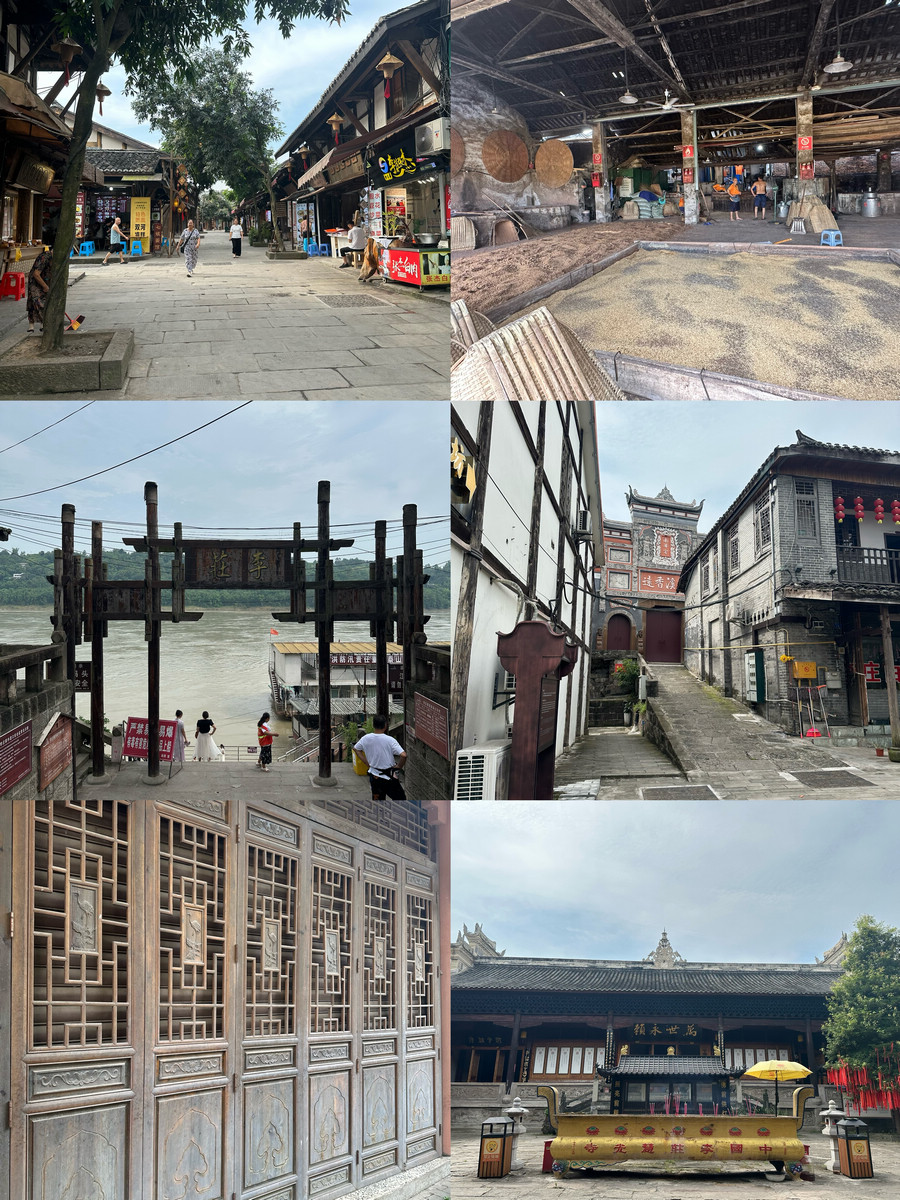
We strolled through the old streets and sampled local delicacies like “White Cake” (Bai Gao) and “White Meat” (Bai Rou). We did not try the “White Liquor” (Bai Jiu), which completes the renowned “Three Whites” of Lizhuang.
White Meat

Moonlight Fields(Yueliangtian), located on the western side of the ancient town, got its poeticname from two crescent-shaped fields in the area. Liang Sicheng and Lin Huiyinlived here for six years from 1940 to 1946, and they managed to completeseveral important works, including History of Chinese Architecture. Today,Moonlight Fields has transformed into a vibrant tourist destination, bustlingwith shops and attractions. In the evening, it offers a captivating view as thelights illuminate the area, creating a charming and picturesque atmosphere.
Moonlight Fields【月亮田】
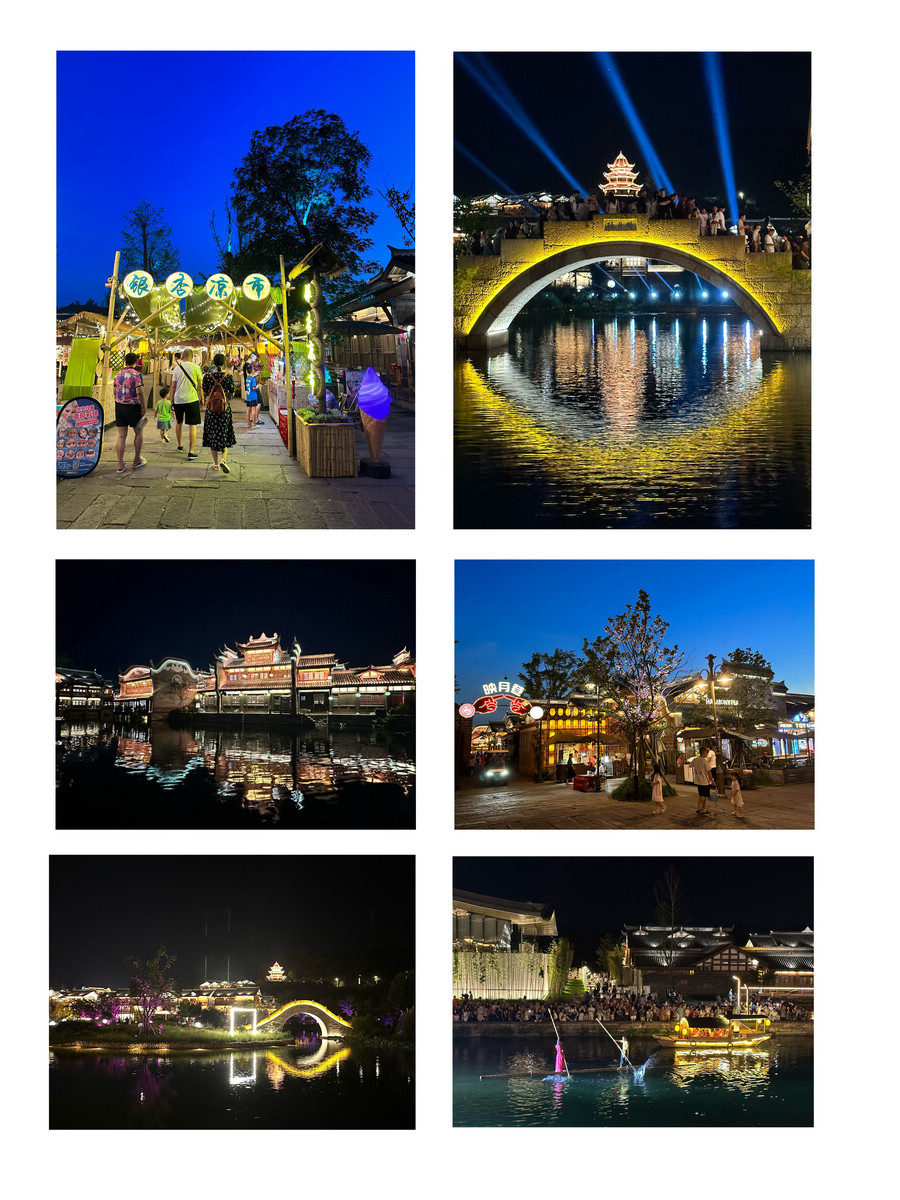
Day9 / 03 August Bus Lizhuang - Yibin
After breakfast, we took a public bus to Yibin City. After resting in our room, we enjoyed a simplelunch of Yibin Ranmian before heading to Hejiangmen Square to view the Yangtze River up close.
Sanjiangkou, also known as Hejiangmen, is located at the intersection of two roads in the main urban area of Yibin City. It is where the Yangtze River, Jinshajiang River, and Minjiang River converge. The Yangtze River flows forward from Sanjiangkou, passing through the Three Gorges, crossing the plain, and entering the East China Sea. Locally, Sanjiangkou is referred to as the "Zero Kilometer of the Yangtze River" due to its position at the confluence of the three rivers. So from Yibin, the Yangtze River truly earns its name.
Sanjiangkou
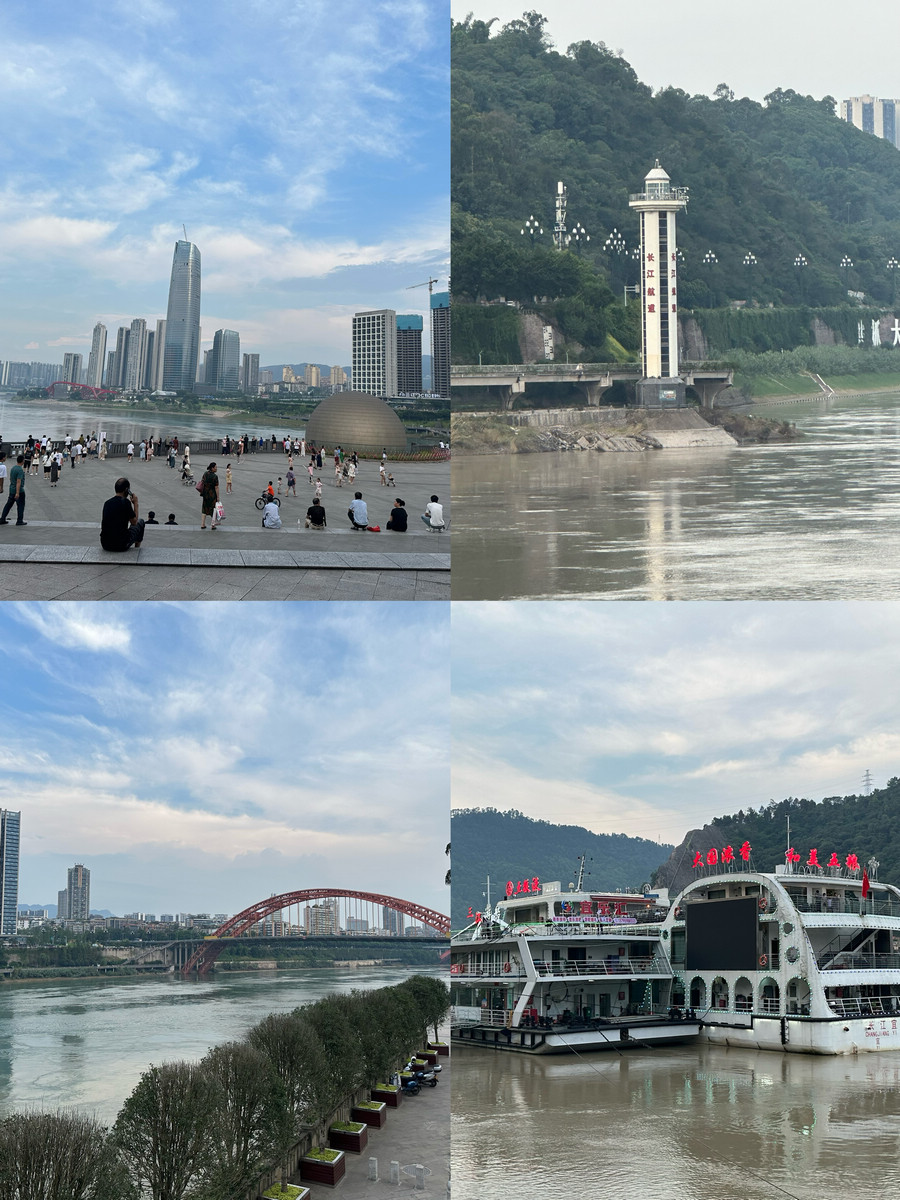
Day10 / 04 August Flight Yibin -Zhengzhou GY7223(0845/1045)
In the early morning, we took taxi to Yibin Airport for our flight home. Our trip ended on a happy note.
Yours Truly
Sunny Qiao - Charmission Travel
